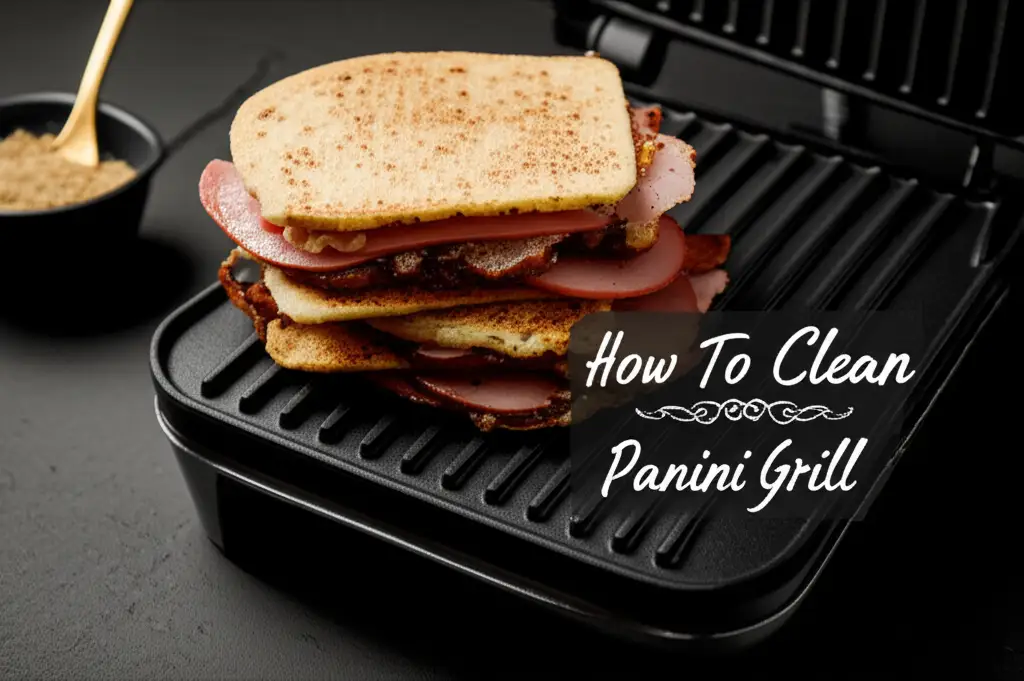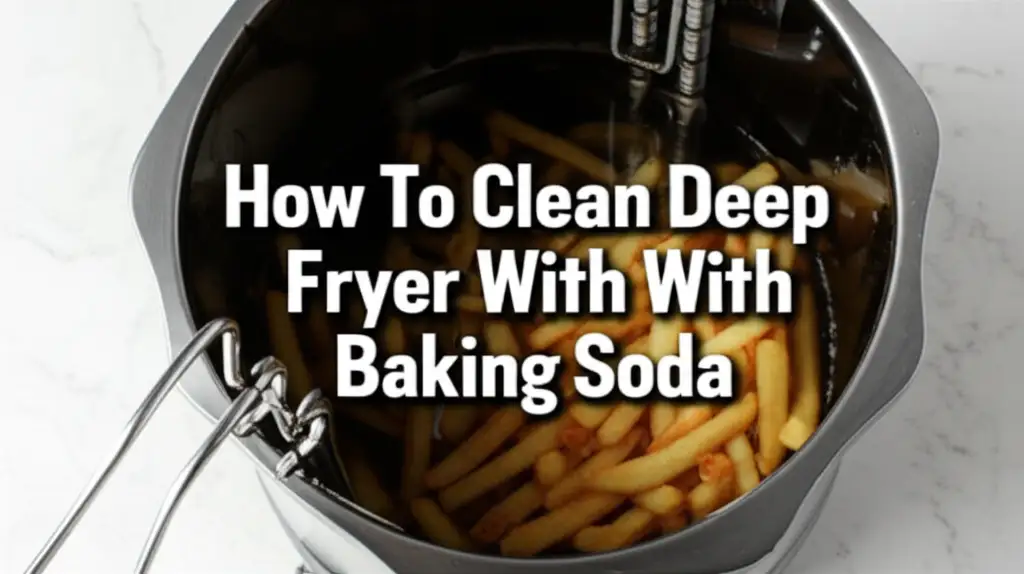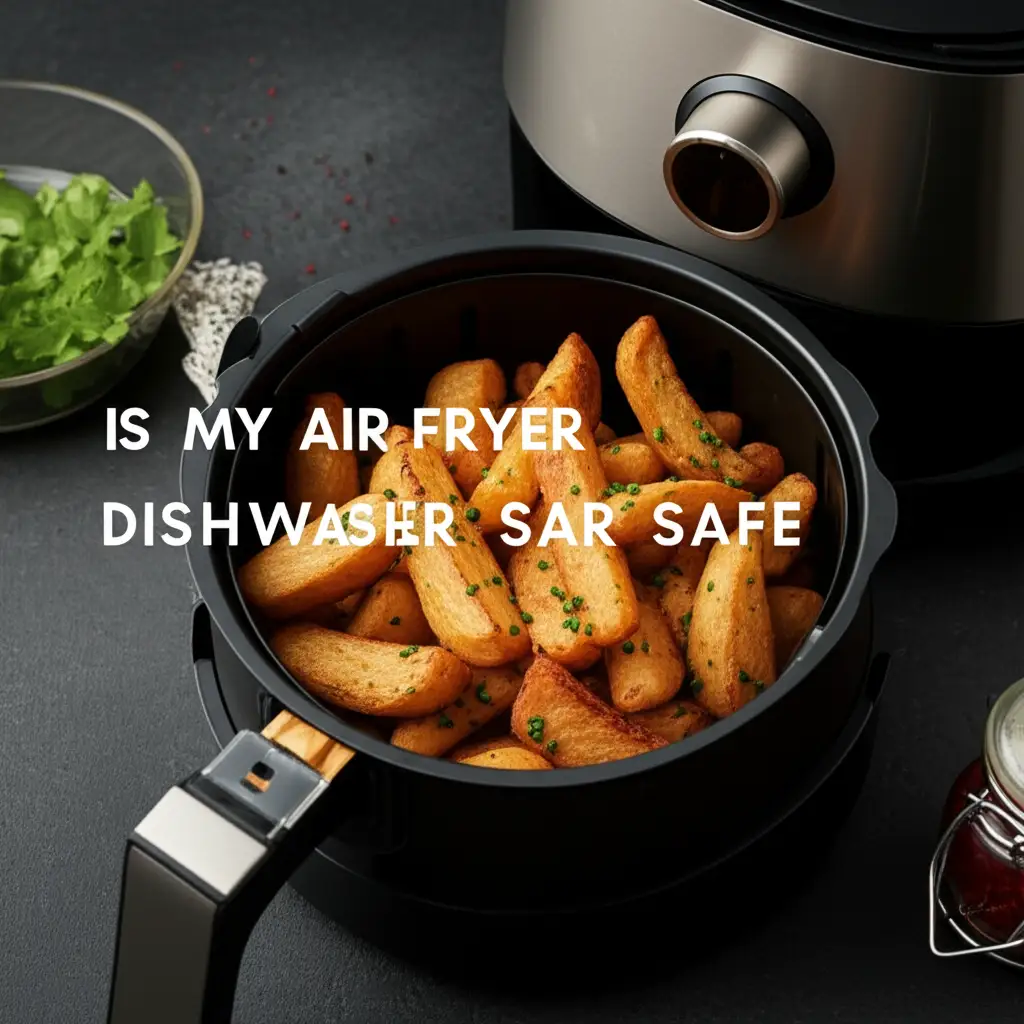· Elira Thomsen · Kitchen Cleaning · 14 min read
How To Clean Panini Grill

How To Clean Your Panini Grill for Best Results
Is your panini grill looking a bit worse for wear? A dirty panini grill can affect the taste of your food. It can also harbor bacteria and shorten the life of your appliance. Cleaning your panini grill regularly is important for both hygiene and performance. I will show you simple ways to keep your grill spotless. This guide covers everything from quick clean-ups to deep cleaning methods.
Takeaway
Keeping your panini grill clean ensures delicious food and a longer-lasting appliance.
- Always unplug the grill and let it cool completely before cleaning.
- Use gentle methods and tools to protect non-stick surfaces.
- Clean after every use for basic maintenance.
- Perform deep cleaning periodically to remove stubborn residue.
Concise Answer
To clean a panini grill, first unplug it and allow it to cool. Scrape off loose food bits with a plastic spatula. Wipe down the plates with a damp cloth and mild soap. For tough spots, use a paste of baking soda and water. Rinse the cloth and wipe again until clean.
Why Cleaning Your Panini Grill Matters So Much
A clean panini grill is more than just about appearances. It directly impacts your cooking experience. Bits of old food can stick to fresh ingredients. This affects the taste and can even make food stick more. I always make sure my grill is clean before I start cooking.
Dirty grills can become a breeding ground for bacteria. Food particles left behind can spoil. This creates an unhealthy cooking environment. Regular cleaning helps prevent the growth of harmful microorganisms. It keeps your kitchen safe.
Cleaning extends the life of your appliance. Food buildup can clog heating elements. It can also damage the non-stick coating. Regular maintenance prevents these issues. Your panini grill will perform better and last longer. This saves you money in the long run.
Essential Tools and Supplies for Panini Grill Cleaning
Before you start cleaning your panini grill, gather all necessary tools. Having everything ready makes the process smoother. You probably have most of these items in your kitchen already. This preparation step saves you time.
Here are the basic supplies you will need:
- Heat-resistant rubber or silicone spatula: This helps scrape off large food pieces. It will not scratch non-stick surfaces. Avoid metal spatulas which can damage the grill plates.
- Soft cloths or sponges: You will need a few of these. One for scrubbing, one for wiping clean.
- Warm water: Use this to dampen cloths and for general cleaning.
- Mild dish soap: A small amount of this helps break down grease and food residue. Choose a gentle soap.
- Paper towels: These are useful for initial wiping and drying.
- Baking soda (optional): For tough, stuck-on messes, baking soda makes a great paste. It is a natural abrasive.
- Non-abrasive scrubber (optional): If you have stubborn spots, a nylon scrubber can help. Avoid steel wool.
- Small brush (optional): A soft brush can get into crevices. This helps remove crumbs.
Make sure your cleaning supplies are clean themselves. A dirty sponge will not clean effectively. Having the right tools makes cleaning your panini grill much easier.
Step-by-Step Guide for Basic Panini Grill Cleaning
Cleaning your panini grill after each use prevents major build-up. This method is quick and effective. It keeps your grill ready for the next delicious meal. I always follow these steps immediately after cooking.
Step 1: Unplug and Cool Down. First, always unplug your panini grill. Safety comes first. Let the grill cool down completely. Hot surfaces can burn you. Cleaning a hot grill also makes food particles bake on more.
Step 2: Scrape Off Excess Food. Once cool, use your rubber or silicone spatula. Gently scrape any large food pieces from the grill plates. This includes cheese, bread crumbs, or dried sauces. Be careful not to press too hard.
Step 3: Wipe with a Damp Cloth. Dampen a soft cloth with warm water. Add a tiny drop of mild dish soap to the cloth. Wipe down the grill plates. Focus on areas with food residue. The warm water and soap will help loosen grime.
Step 4: Rinse and Wipe Again. Rinse your cloth thoroughly with clean water. Wipe the grill plates again to remove any soap residue. Make sure no soapy film remains. This ensures your food tastes fresh next time.
Step 5: Dry Completely. Use a dry, clean cloth or paper towels. Wipe the grill plates completely dry. Moisture can lead to water spots or even rust over time. A dry grill also helps prevent mold growth. You can also apply general cleaning techniques to other appliances, such as how to clean a refrigerator, ensuring every part of your kitchen is spotless.
Following these steps after every use makes deep cleaning much less frequent. It maintains your panini grill’s performance.
Deep Cleaning Your Panini Grill for Stubborn Grime
Sometimes, basic cleaning is not enough. Baked-on grease and stubborn food bits require a more intense approach. Deep cleaning ensures your panini grill is truly spotless. I use this method when regular cleaning hasn’t quite done the job.
Step 1: Prepare the Grill. As always, unplug the grill and let it cool completely. Safety is paramount. Remove any large, loose food pieces with your spatula. This clears the way for deeper cleaning.
Step 2: Create a Cleaning Paste. Mix baking soda with a small amount of water. You want to create a thick paste. This paste is a gentle abrasive. It helps lift stubborn grime without scratching the surface. This method is similar to how baking soda can be used as a cleaning agent in a dishwasher to clean various residues.
Step 3: Apply the Paste. Spread the baking soda paste generously over the stubborn, dirty areas. Let the paste sit for 15-30 minutes. This allows the baking soda to break down the grease and soften the baked-on food. For extremely tough spots, you can leave it on for an hour.
Step 4: Gentle Scrubbing. Use a non-abrasive scrubber or a soft brush. Gently scrub the areas with the paste. The baking soda will help lift the grime. Work in small circular motions. Do not use metal scrubbers or abrasive sponges. These can damage the non-stick coating. If you encounter rust-like spots, applying similar gentle methods used to clean flat top grill rust might be helpful, but always be careful with the panini grill’s specific coating.
Step 5: Wipe Clean. Dampen a clean cloth with warm water. Wipe away the baking soda paste and loosened grime. You may need to rinse and wring out your cloth multiple times. Continue wiping until all residue is gone.
Step 6: Final Rinse and Dry. Finally, wipe down the grill plates with a clean, damp cloth. Make sure all baking soda is removed. Then, thoroughly dry the grill with a clean, dry cloth. A completely dry grill prevents water spots and mold.
Deep cleaning brings your panini grill back to its best. It ensures every panini cooks perfectly.
Cleaning Specific Panini Grill Types: Removable vs. Fixed Plates
Panini grills come in different designs. The type of grill plates affects your cleaning method. Knowing your grill’s design makes cleaning much simpler. Most home panini grills have either fixed or removable plates.
Cleaning Panini Grills with Removable Plates
Removable plates are much easier to clean. Many models allow you to detach the grill plates from the main unit. This makes washing them similar to washing regular dishes.
Steps for Removable Plates:
- Unplug and Cool: Always unplug the grill and let it cool completely.
- Remove Plates: Carefully unlatch and remove the grill plates. Consult your grill’s manual if you are unsure how to remove them.
- Soak (Optional): For very sticky plates, soak them in warm, soapy water. Let them sit for 10-15 minutes. This helps loosen baked-on food.
- Wash: Wash the plates by hand with warm water and mild dish soap. Use a soft sponge or cloth. For stubborn spots, use a non-abrasive scrubber or baking soda paste. Some removable plates are dishwasher safe. Check your appliance manual before putting them in the dishwasher.
- Rinse and Dry: Rinse the plates thoroughly to remove all soap. Dry them completely before reattaching them to the grill.
Cleaning Panini Grills with Fixed Plates
Fixed plates are common in many panini grills. They require more careful cleaning since you cannot immerse them in water. You must clean these plates while they are still attached to the main unit.
Steps for Fixed Plates:
- Unplug and Cool: Unplug the grill and let it cool down fully. This is critical for safety.
- Scrape Off: Use a plastic or silicone spatula to scrape off any large food pieces. Get into the grooves as much as possible.
- Wipe with Damp Cloth: Dampen a clean cloth with warm water and a tiny bit of mild dish soap. Wipe down the fixed plates carefully. Avoid getting water into the electrical components.
- Stubborn Spots: For tough spots, apply a baking soda paste directly to the grime. Let it sit for a few minutes. Then, gently scrub with a damp non-abrasive scrubber or soft brush.
- Rinse Cloth and Wipe: Rinse your cloth thoroughly with clean water. Wipe the grill plates again to remove all soap and loosened grime. Repeat this step as needed.
- Dry: Use a dry, clean cloth to wipe the entire surface completely dry. Ensure no moisture remains, especially around electrical parts.
No matter the type, always prioritize safety. A clean grill works better and lasts longer.
Maintaining Your Panini Grill Between Cleans
Regular maintenance is key to keeping your panini grill in top condition. These simple habits reduce the need for intensive deep cleaning. They also ensure your grill is always ready for use. I find these small steps make a big difference.
Wipe Down After Every Use: This is the most important tip. As soon as your grill cools down, give it a quick wipe. Use a damp paper towel or a soft cloth. This removes fresh food debris before it hardens. It prevents food from baking onto the plates.
Use Parchment Paper or Grill Liners: To minimize direct contact with food, use parchment paper or special grill liners. Place a sheet on both the top and bottom plates before cooking. This creates a barrier between your food and the grill. It catches most of the drips and crumbs. Cleanup becomes as simple as throwing away the paper.
Avoid Overfilling: Do not put too much food on your panini grill. Overfilling can cause food to squeeze out the sides. This leads to more drips and messes on the grill surface. Cook in smaller batches if needed.
Clean the Drip Tray Regularly: Many panini grills come with a drip tray. This tray collects excess oil and grease. Make sure to empty and wash this tray after every few uses. A full drip tray can overflow. It can also harbor unpleasant odors. Emptying the drip tray is as important as cleaning the grill plates.
Store Properly: Store your clean and dry panini grill in a clean, dry place. Protect it from dust and spills. You can use a cover or simply store it in a cupboard. Proper storage prevents new dirt from accumulating.
By following these maintenance tips, you can keep your panini grill cleaner for longer. These actions reduce cleaning time significantly. They also help your appliance last many years.
Common Panini Grill Cleaning Mistakes to Avoid
Cleaning your panini grill can be straightforward. However, some common mistakes can damage your appliance or make cleaning harder. Knowing what not to do is as important as knowing what to do. I have learned these lessons over time.
Mistake 1: Cleaning a Hot Grill. Never attempt to clean a hot panini grill. This is extremely dangerous. You can suffer severe burns. Hot surfaces also make food particles bake on more stubbornly. Always unplug the grill and let it cool completely before touching it.
Mistake 2: Using Abrasive Cleaners or Tools. Using steel wool, harsh scouring pads, or abrasive chemical cleaners can ruin your grill’s non-stick coating. This coating is delicate. Once damaged, food will stick constantly. Always use soft cloths, silicone spatulas, and mild soaps. If you need a gentle abrasive, baking soda is a good choice. Even when cleaning tough grime like mold off a dishwasher, you still choose gentler, effective methods to protect surfaces.
Mistake 3: Immersing the Entire Grill in Water. Unless your grill specifically states it is fully submersible, never put the main unit in water. This will damage electrical components and can be a serious safety hazard. For fixed plate grills, carefully wipe the surfaces. Keep water away from the electrical parts.
Mistake 4: Not Cleaning Regularly. Leaving food residue on the grill for days makes it harder to clean. Food dries and bakes onto the plates. This requires more effort and stronger methods later. A quick wipe after each use prevents this problem. It is like general appliance maintenance, where you also regularly clean your refrigerator to prevent stubborn grime.
Mistake 5: Using Metal Utensils for Scraping. Metal spatulas, forks, or knives can scratch the non-stick coating. Even small scratches can cause food to stick. Stick to silicone, rubber, or plastic tools for scraping.
Mistake 6: Leaving Water on the Grill. After cleaning, always dry your grill completely. Leaving water on the plates can lead to water spots. It can also cause rust over time, especially on non-stick surfaces or heating elements. This is similar to how you would dry any grill to prevent rust, for example, after cleaning a flat top grill of rust.
Avoiding these common mistakes will keep your panini grill in excellent condition. It will ensure many more years of perfectly grilled sandwiches.
FAQ Section
How often should I clean my panini grill?
You should perform a basic wipe-down after every single use. This prevents food from hardening and building up. A deep clean is needed less often. Do a deep clean every few weeks or whenever stubborn grime accumulates. Regular light cleaning makes deep cleaning less frequent and easier.
Can I use soap on my panini grill plates?
Yes, you can use a small amount of mild dish soap. Mix it with warm water. Apply it with a soft cloth or sponge. Always rinse the plates thoroughly afterward with clean water. Make sure no soap residue remains. This prevents any soapy taste on your food.
What if food is stuck on the grill plates?
For stuck-on food, turn off and unplug the grill. Let it cool. Then, lay a damp, warm cloth over the hardened food. Let it sit for 10-15 minutes to soften the residue. After soaking, scrape gently with a plastic spatula or scrub with a baking soda paste.
Is it safe to immerse panini grill plates in water?
It depends on your grill. If your panini grill has removable plates, they are often safe to immerse in water or even wash in a dishwasher. Always check your grill’s instruction manual first. For grills with fixed plates, never immerse the entire unit in water due to electrical components.
How do I clean a non-stick panini grill?
Clean a non-stick panini grill with gentle methods. Use a soft cloth, mild dish soap, and warm water. Avoid abrasive cleaners, metal scrubbers, or sharp tools. These can scratch and ruin the non-stick coating. A baking soda paste is a safe and effective option for tougher spots.
Can I use abrasive cleaners on my panini grill?
No, you should never use abrasive cleaners, steel wool, or harsh scouring pads on your panini grill. These products will scratch and damage the non-stick coating. Once the coating is damaged, food will stick more easily, and the grill’s performance will decline. Always opt for gentle cleaning solutions.
Conclusion
Cleaning your panini grill does not have to be a chore. With the right tools and techniques, you can keep your appliance sparkling. Regular cleaning ensures your grill cooks efficiently. It also keeps your food tasting fresh and delicious. A well-maintained panini grill will serve you for many years.
Remember to always prioritize safety. Unplug your grill and let it cool completely before you begin. Use gentle methods to protect delicate non-stick surfaces. A quick wipe after each use saves you time in the long run. Embrace these simple habits. Your perfectly clean panini grill is ready for endless tasty meals.





